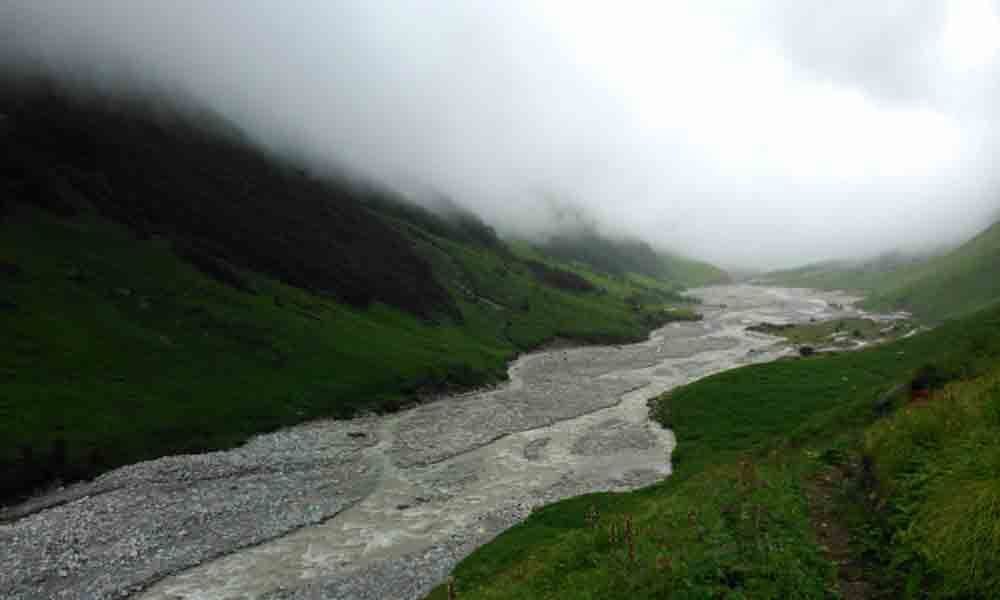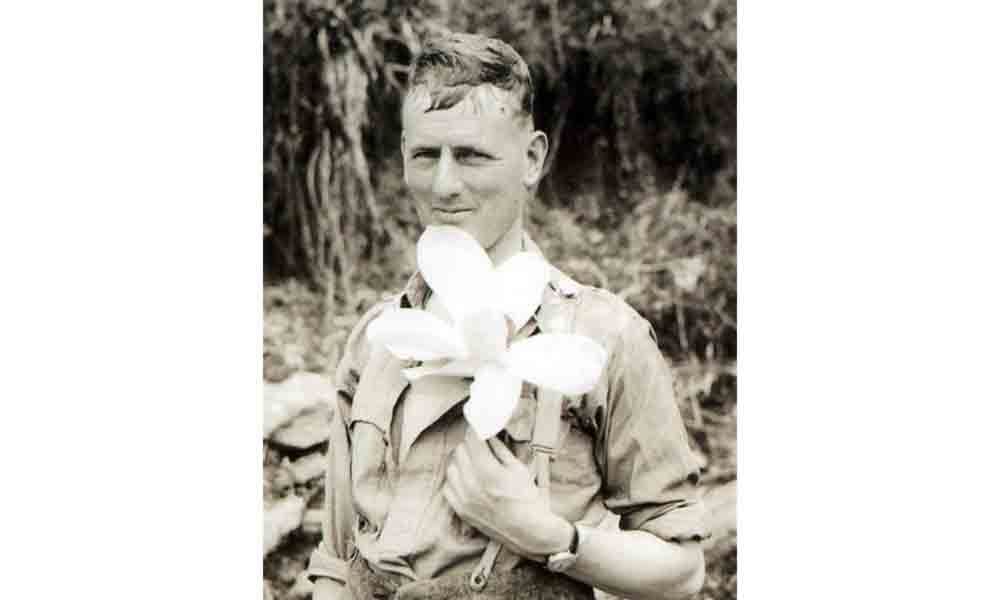Live
- Tirupati: UTF office-bearers elected unanimously
- Tirupati: SP seeks public cooperation to check crimes
- State govt committed to protect Wakf lands: Shariff
- Tirupati: 8 held; 69 red sanders logs seized
- Govt Schemes: Take steps to achieve loan targets says Collector to pvt banks
- Consumer rights protection is a shared social responsibility
- High Court relief for KCR, Harish Rao
- Visakhapatnam: Class VIII boy allegedly commits suicide
- Ram Mohan calls for collective efforts to develop dist
- Convocation ceremony held at ICBM-SBE
Just In
Four days of almost zero connectivity with the outside world, travelling next to gurgling streams and roaring rivers throughout the trip, constant drizzles with sudden snatches of dazzling blue sky, intermittent views of snow peaks, trudging through flower-filled meadows cupped by mighty green mountains - Whenever I recall my trip to the Valley of Flowers, these are some of the visuals which pour into my mind. A paradise for botanists and nature lovers, the cocktail of clouds, mist, moisture and fragrance make the visit to the Valley of Flowers, especially during the monsoons an experience of a lifetime – we are rewarded with an ethereal carpet of blooms and an intoxicating fragrance.
Cradled within the Nanda Devi Biosphere Reserve, the world-famous Valley of Flowers measuring 3 km by 3 km (approximately) is encircled by snowy peaks and cut through by the crystalline Pushpawati River. It's a 14-km hike from Govindghat (the nearest road head) to the settlement of Ghangaria, from where a winding 3 km trail takes one to the valley. The park has over 600 species of flora, many of which are endemic and almost extinct. In addition, the valley also has wild fauna like the Himalayan black bear, yellow-throated marten, Himalayan serow and red fox.
The Valley of Flowers is of great mythological significance for Hindus because as per Ramayana it is the same place where Sanjivani Booti grew and was picked up by Hanuman to treat Laxman.
The Valley was discovered by Frank S Smythe in 1931 when he along with other mountaineers were coming down after climbing Kamet, a 25,500 feet high mountain. They were passing by Bhyuandar Pass, lost the way and landed up at the Valley of Flowers. They saw a different variety of flowers and camped there for two days. Smythe authored a book called 'The Valley of Flowers', which unveiled the beauty and floral splendours of the valley to the world. The place was declared a national park in 1982 and is now a World Heritage Site. The locals, of course, always knew of the existence of the valley, and believed it to be inhabited by fairies.
Govindghat though somewhat crowded, is an interesting place filled with pilgrims, ponies and trekkers. We straight away headed to Gurudwara for Langar, which is always running a great service at such a daunting height. The narrow roads were chock-a-block with tons of shops selling items that can help in the trek like canes, raincoats, etc.
After recharging ourselves, we embarked on the trek. The first few kms after Govindghat was more of a monotone – just joyless trudging along and it wasn't until that I had gained height and could glimpse the Himalayas that my spirits really lifted. Once again, I was mesmerised by the beauty of the mighty mountains I always l look up to – remote, magnificent, and splendid. Soon I was enjoying the trek. It was reasonably steep, but I was in tune with my surroundings and had recovered my equilibrium (both physically and mentally). However, by the time I reached Ghangria, I was exhausted and eager to call it a day.
The next day, early morning we set off for the enchanted valley which is covered with snow for a large part of the year. During our visit, though it was mid-August, we encountered snow at quite a number of places. The narrow stone trail along the Pushpavati River, which emerges from the glaciers in the valley was an exhilarating sight. The path, however, had caved in at places and we encountered landslides at many locations – at times we even had to walk on the riverbed.
It took us about three hours to get to the spot where the burst of bloom really began. Once there, it was simply heaven! We were surrounded by flowers, flowers, and just flowers on all sides- armies of bright red Potentillas, lonely geraniums by the path side, colonies of pink Primulas, besides wild roses and lilies in a variety of hues. The valley is also home to many celebrated flowers like the Brahmakamal, the Blue Poppy and the Cobra Lily.
The vast expanse of the valley is unbelievably beautiful, and there are meadows of flowers as if somebody is maintaining a huge flower farm. The sheer number of flowers is so large that sometimes one has to wade in knee-deep flowers to explore an area having flowers of a different kind. The flowers belong to different species and sport different colours and textures. However, they all have one thing in common – the very sight of them is a delight to the eyes and fills the mind with a refreshing and soothing feel. The visuals of the valley are so impactful that they linger on in the mind long after one is back.
In the world of flowers, blue is an unusual hue. But here, Mother Nature has splashed various shades of blue with gay abundance. There are tiny beautiful blue flowers called forget-me-not, spread throughout. The blue poppy too, of course, holds the pride of place. I am enchanted with bunches of blue-berries, and what a heavenly blue! The place somehow does not allow me to move on – I just feel like exploring more and more.

© 2024 Hyderabad Media House Limited/The Hans India. All rights reserved. Powered by hocalwire.com











